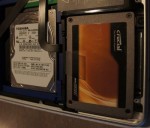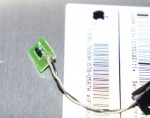Paired storage is a growing trend in the laptop computer market, with many high-end machines sporting both a SSD and hard disk drive. But it remains a game for the rich, adding many hundreds of dollars to the cost of a computer, and manually placing data is inefficient. It will be interesting to see if future operating systems bring better support for paired storage, and if it will reach into the server world.
OWC
Decision Point: Comparing the 2011 MacBook Pro Models
As I discussed in my 2011 MacBook Pro introduction, all three models of Apple’s Pro lineup include key inside upgrades: Speedy “Sandy Bridge” CPUs and Intel’s new Thunderbolt port. Although the aluminum case is unchanged, it was these features I was waiting for. But which model to buy?
How To Add An eSATA Port To An Intel iMac
My late-2009 27″ Intel iMac now has an eSATA port. I’m documenting how I did it here mainly for posterity. Although it works fine, I cannot recommend that others attempt to perform the same surgery on their own crazy-expensive Apple computers. eSATA mods like this won’t be satisfying to most users, and the operation is risky and destructive enough that non-crazy people shouldn’t attempt it!
ExpressCard SATA Adapters: The Lesser of Two Evils
While considering the possibilities of adding an eSATA port to my iMac, I am also investigating eSATA solutions for my MacBook Pro. Since I have an ExpressCard slot, the logical choice is to pick up one of the many ExpressCard eSATA adapters. But it looks like the options aren’t all that great: The SiliconImage chipset used in many is full-featured, but the drivers and hardware implementations are buggy, while the older JMicron controller is cheap and simple but lacks many desirable features.
Four Ways to Add eSATA to Your iMac
The latest Intel iMac line is a killer desktop, from its brilliant screen to its excellent performance. But it’s a little lacking when it comes to expansion: A workstation really needs more I/O than five USB and one FireWire port! Since I’m a storage fanatic, my attention naturally turns toward eSATA, and I’m not the only one. Although I’ve come up with three different methods of adding eSATA to my iMac, I haven’t yet taken the plunge and made it happen.



